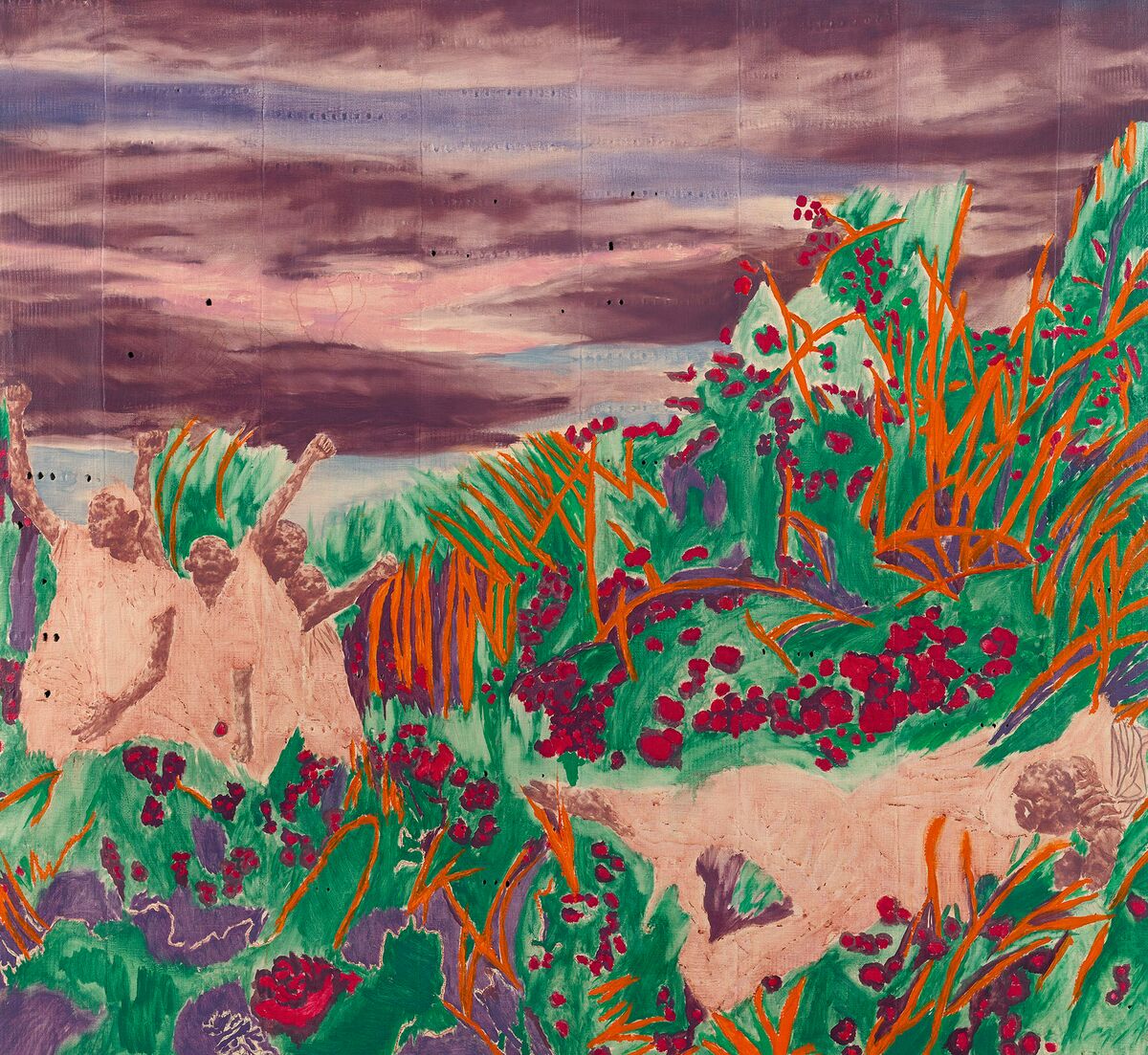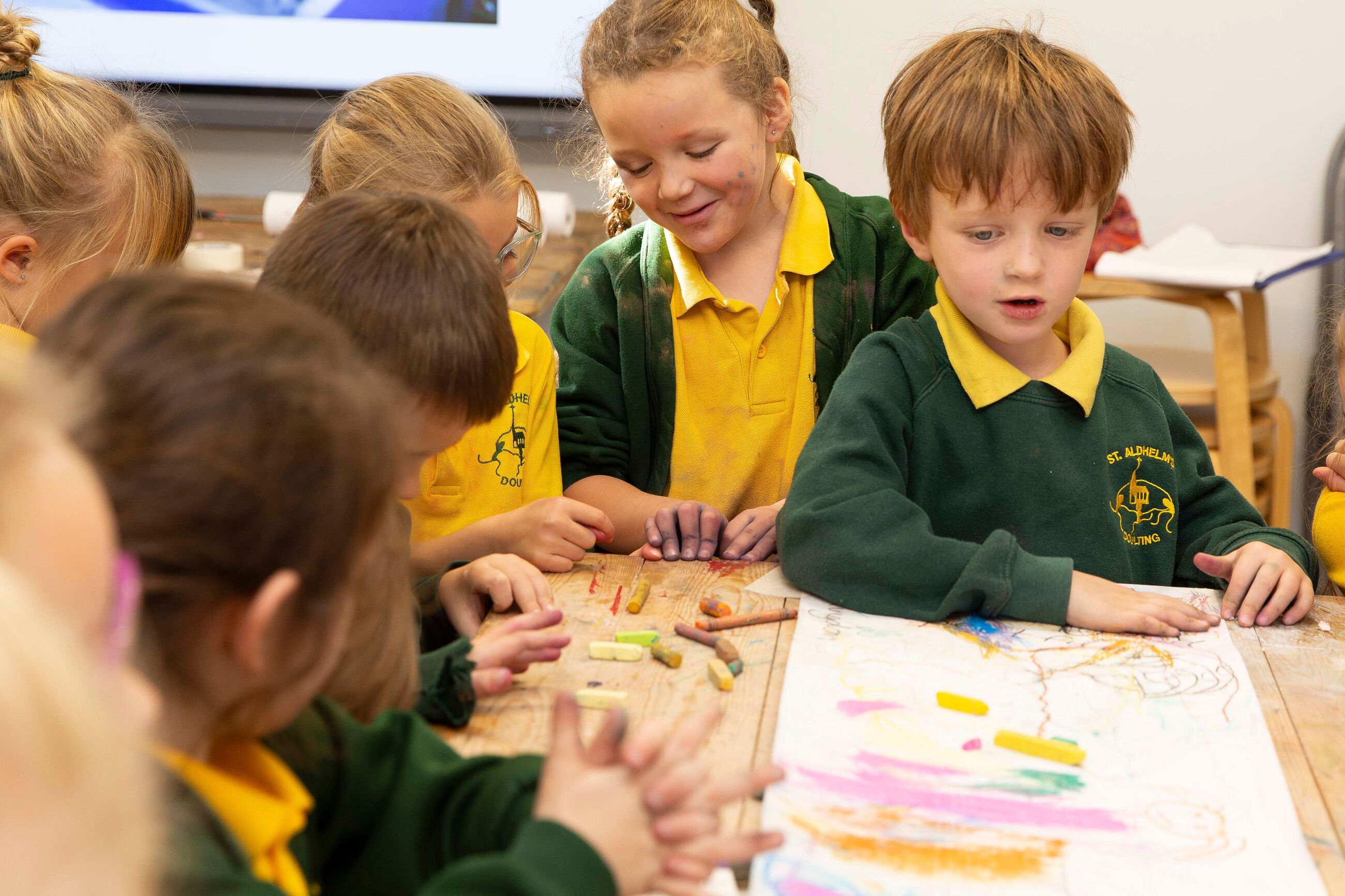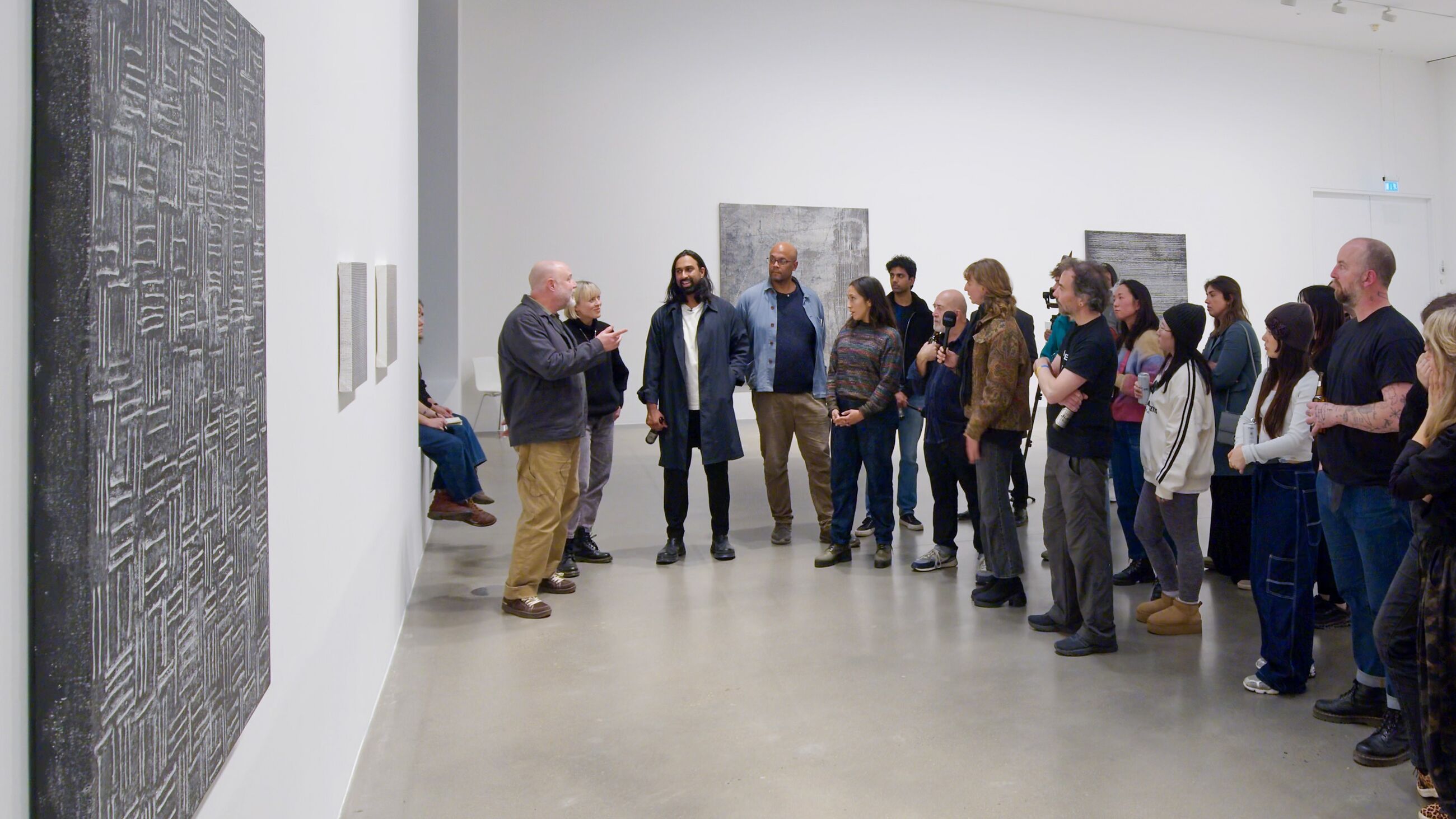Printmaking Glossary

Installation view, ‘Rita Ackermann. Splits: Printing | Painting’, Hauser & Wirth New York, 18th Street 2024. Photo: Thomas Barratt
Printmaking Glossary
This printmaking glossary has been produced to accompany the exhibition ‘Rita Ackermann. Splits: Printing | Painting’, on view at Hauser & Wirth, 18th Street through 26 July 2024.
Heralding a significant leap in Ackermann's artistic practice, the seven large-scale silkscreens on view represent a dramatic convergence of the technical processes of printmaking with the artist's sustained exploration of form, movement and erasure. Produced in collaboration with master printer Keigo Takahashi, Ackermann sought to transform paintings into prints, without recourse to the reproduction of a model.
Learn more about the works on view by exploring the printmaking terms and techniques defined below.
Printmaking: an artistic process based on the principle of transferring images from a printing surface called a matrix onto another surface, such as paper or fabric. The resulting print is an original work of art, rather than a copy of a work in another medium. 1
Printer: The specialist who provides technical aid throughout the printing process. Historically, printmaking has been characterized by a divided production process, where an artist and a printer work collaboratively but accomplish different tasks. 2

Installation view, ‘Rita Ackermann. Splits: Printing | Painting,’ Hauser & Wirth New York, 18th Street, 2024. Photo: Thomas Barratt
Matrix: a printing surface such as a woodblock, a linoleum block, a metal plate, a lithographic stone, or a mesh screen. Most, though not all, matrices are able to print the same image many times. 3
Edition: a series of identical impressions or prints made from the same matrix. Editions may be limited or unlimited in number. Each print in a limited edition is usually numbered in the lower left margin. For example, an edition of 50 would be numbered 1/50, 2/50, etc. 4
Bon à Tirer (B.A.T.): A print that is not included in the edition, but which indicates the standard, final proof the artist has approved for the master printer to duplicate for the edition. A print which is a bon à titer (translated from French as "ready to pull") can be identified by the inscription "B.A.T" found in the lower left-hand margin. 5, 6
Rita Ackermann collaborated with master printer Keigo Takahashi (left) for this series of prints, shown here working on ‘15 Takes’ with collaborator Misa (right) at the Keigo prints Inc. Studio in Brooklyn, NY.
Silkscreen or screenprint: a printmaking process where ink is forced through a mesh screen onto a surface. Making certain areas of the screen impervious to printing ink creates a stencil, which blocks the printing ink from passing through the screen. The ink that passes through forms the printed image. 7
Stencils can be composed of a wide variety of materials, including fabric, greasy paint or a design on a transparency. Stencils can be applied to the screen in different ways including placing them directly onto the surface of the screen, painting them onto the screen or by transferring a design onto the screen using a photo-sensitive emulsion. A squeegee is then used to press ink through the unblocked areas of the screen, directly onto paper. 8
If the artwork’s composition requires more than one color, the printmaker must repeat the process using a different stencil for each color. To keep the colors of the composition aligned, the printmaker must take precautionary measures to ensure the proper registration of the sheet of paper and the screen. 9
Rita Ackermann’s titles for the series of prints, such as ‘13 Takes’ and ‘15 Takes’, give visibility to the complex layers of color employed to produce each work.

Rita Ackermann, ‘19 Takes,’ 2023, 19-color screenprint on Saunders, Waterford watercolor paper 425gsm, 141 x 121.9 cm / 55 1/2 x 48 in © Rita Ackermann. Photo: Sarah Muehlbauer
An artist might select paper based on its durability, pliability, smoothness and absorbency. Many of the works on view are printed on Saunders Waterford watercolor paper 425 gsm. Paper weight is typically measured in gsm (grams per square meter) or lbs (pounds).
To continue exploring printmaking terms and techniques, visit these glossaries and resources pages:
1, 6 Center for Book Arts, Printmaking Glossary
2, 3, 5 Print Center New York, Printmaking Glossary
4 Museum of Modern Art, Art Terms
7, 8, 9 Metropolitan Museum of Art, What is Printmaking?
Resources
1 / 10









